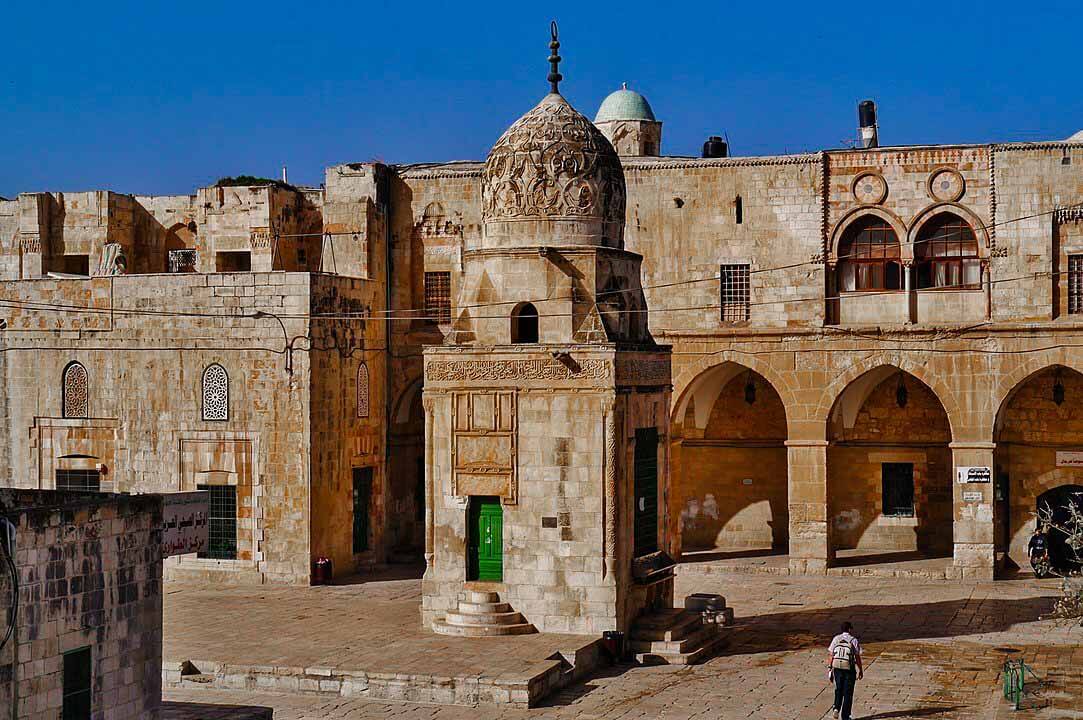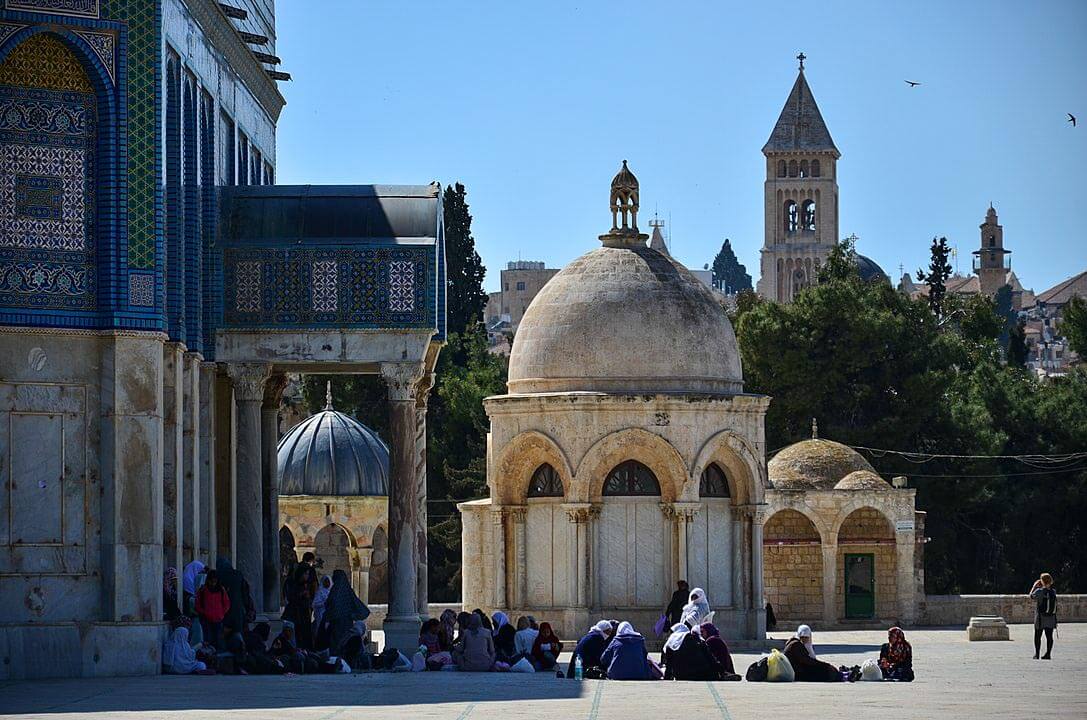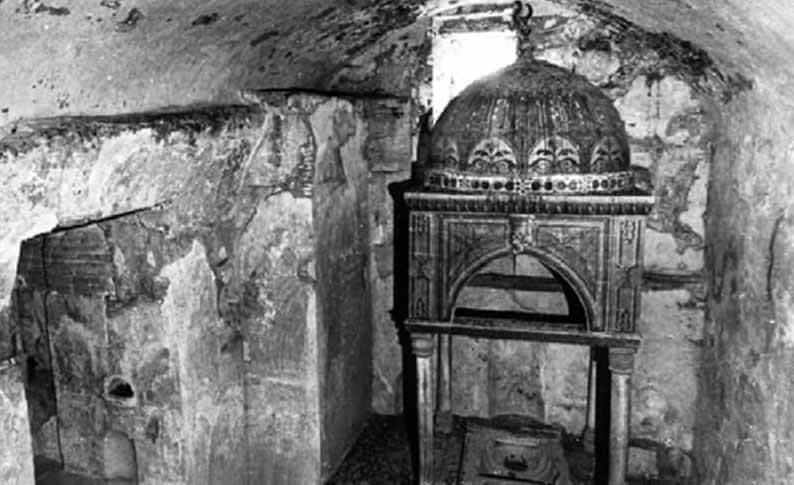Jerusalem, Palestine
Al-Ka’as fountain
Fountain of Ibrahim Rumi
Fountain of Mustafa Agha
Fountain of Qaitbay (Sabil Qaytbay)
Sabil Bab al-Maghariba
Sabil Qasim Pasha
Sabil Sha’alan
Sabil Sultan Suleiman
Coordinates: 31.778025, 35.235406
Al-Kas Fountain
Al-Kas meaning cup or bowl, is an ablution fountain located on Haram ash-Sharif just in front of Masjid al-Aqsa. It is used by worshipers for ablutions before salah, a ritual washing of the hands, arms, legs, feet, and face before entry into the mosque. It was first built in 709 by the Umayyads, but in 1327–28 Governor Tankiz enlarged it to accommodate more worshipers.
Sabil Bab al-Maghariba
The Sabil Bab al-Maghariba was built sometime between 948-987 and 1541-1579. Its eastern wall is constructed around the mouth of a cistern that predates the building itself.
It is located directly in front, east, of the Bab al-Maghariba (Moroccans’ Gate) and west of Masjid al-Aqsa.
Today the sabil is no longer used, however, from an 18th century waqfiyya (endowment document) we know that a water-carrier was paid to fill the basins of the Sabil Bab al-Maghariba from its cistern from morning to evening, every day.
Sabil Qaytbay
Fountain of Qayt Bay or Sabil Qaitbay is a domed public fountain located on the western esplanade of the Haram ash-Sharif in Jerusalem, near to Madrasa Al-Ashrafiyya.
Built in the 15th century by the Mamluks of Egypt, it has been called “the most beautiful edifice in the Al-Haram Al-Sharif” after the Dome of the Rock.
It is said that the team of engineers, architects and builders constructed both the Madrasa al-Ashrafiyya and the Fountain of Qayt Bay, and that they were sent by Sultan Qaytbay from Egypt to Quds to execute the work.
The fountain which is still used continues to provide visitors to the Al-Haram al-Sharif with fresh water.
Sabil Sultan Suleiman
Sabil of Sultan Suleyman, also known as Sabil Bab Attim Haram ash-Sharif. It is located immediatly inside the Dark Gate and faces Iwan of Sultan Mahmud, also known as the Dome of the Prophet’s Lovers. It is a free standing fountain and is fed through an aquaduct.
Sabil Sha’alan
It is located in the north-western section of the Haram ash-Sharif. It is the last Ayyubid sabil built in Jerusalem.
The sabil is still in use today, and faucets have been installed in its walls, to facilitate the provision of water for drinking and ablutions. The sabil is also used to water the trees found in the Haram terrace.
Sabil Qasim Pasha
Sabil Qasim Pasha (Qasim Pasha Fountain), also known as Sabil Bab Al-Mahkama (Fountain of the Palace House) and Sabil Bab Al-Naranj (fountain of the bitter orange), is the first Ottoman public building to be built in Jerusalem.
The earlier works were not new buildings, but the restoration of the wall and the conversion of the Jerusalem fortress into the Masjid Al-Nabi Dawud (Mosque of the Prophet David). The function of Sabil November Pasha, like other Sabils, was to supply fresh water to the public for drinking and ablutions. There are accounts that Sabil was in use until the late 1940s.
Sabil Mustafa
It is ituated at the north-western corner of an unnamed mastaba with a free-standing mihrab at the southern end. It is one of the smallest one-unit structures built in Jerusalem in the Ottoman period.
Two steps raise the sabil above the level of the Haram ash-Sharif precinct. The structure is crowned by a dome, which is supported by four small columns. The upper section of the base of the sabil forms a square-plastered basin.
Fountain of Ibrahim Rumi
It is one of the few Sabils which belong to three-window style. The building is simple but well-constructed, using dressed stone.
The Sabil caters for people arriving from Bab al-Nazir and Bab al-Ghawanima. It is noteworthy that the Sabil founder restricted its use to the poor and destitute and prevented use by water providers, or transporting water from it in leather containers, indicating that he refused trading in water.































